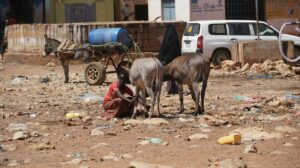The Social Transformation Of The People Living In Kibera Slum In Nairobi
Introduction:
According to the UN HABITAT (2008), the Kibera Slum Upgrading initiative is holistic and integrated in the sustainable development approach. The overall aim of the project is to improve the livelihoods of people living and working in Kibera through targeted interventions to address shelter, infrastructure, services, land tenure and employment opportunities, as well as the impact of HIV/AIDS in the settlements.
Housing the growing population in Kenya remains one of the greatest challenges of achieving the Millennium Development Goal. The recent proliferation of slums represents the insufficiency of resources and physical planning policies and regulations. Slum redevelopment strategies are often conceived as the solution to stop further growth of slums. Locally one such strategy is Kenya Slum Upgrading Programme (KENSUP) which was launched in 2004 piloted in the Kibera Soweto east Village.

Guided by the need to ensure that development interventions place the people first in such strategies the study was therefore designed to answer the following questions: What are the social and economic effects of the Kenya Slum Upgrading Programme on the Kibera residents? How are the Kibera slum residents coping with the transformation as a result of the slum upgrading? Accordingly the overall objective of the study was to explore how the lives of the Kibera slum residents have been transformed following the slum upgrading programme.
The specific objectives of the study were to investigate the socio-economic effects of the slum upgrading programme and to find out the coping strategies the Kibera slum residents have developed as a response to the slum upgrading programme.
Statement of Problem:
Slum redevelopment or upgrading is a concept that has been around for several years. Given the trends in urbanization and the growing slum populations, slum upgrading interventions may be an important component of the development process. Notably the redevelopment interventions have been geared towards modernising the people and localities where they are planned.
History of Kibera slum:
Kibera has the dubious distinction of being one of the largest informal settlements in Africa. It is reportedly the second largest slum regionally. The depravations people living in this slum like many others are fundamental. Kenya’s history of colonialism played a major role of ensuring both spatial and income segregation thus the development of slums such as Kibera. Kibera originated as a settlement in the forests outside Nairobi, when Nubian soldiers returning from service in the First World War were awarded plots there in return for their efforts.
Economic and socio-cultural profile of Kibera:
Findings from the Kibera Business Survey carried out by Research International (2004) give a picture of the economic structure of Kibera. Entrepreneurship was found to be vital to Kibera inhabitants as only 3% reported being involved in the formal sector. The report also noted that the overwhelming majority of inhabitants do not own the premise on which their businesses are situated and as such the upgrading should integrate residential security of tenure schemes with business security of tenure.
Kenya Slum Upgrading Programme (KENSUP):
Slum upgrading has been supported in various circles as one of the more effective means of improving the conditions of the poor. Upgrading projects focus on providing basic services to improve the well-being of low income communities, including a range of infrastructure interventions frequently undertaken in conjunction with social interventions, such as the regularization of areas with insecure tenure.
Socio-Economic effects of a best practice Slum Upgrading Program in Kenya:
One of the most successful slum upgrading programes locally in Kenya is the Jamii Bora Kaputei town project. This pilot project has attracted a lot of attention domestically and internationally. The project began in 2007, through the development of a new city the Kaputei Town for 10,000 inhabitants. The town and the houses are designed and produced in a way has enabled the very poor to acquire their own house through affordable housing loans. The project has provided 2000 homes that house at least 10.000 people.
Conclusion:
This literature review revealed the gap of lack of evaluation of KENSUP. The available information highlights on the KENSUP strategy for poverty alleviation. It is clear that there are a lot of expectations on what the achievements of the program should be. The existing literature reports on how dire the situation is at the slum. However, scanty information expressing local perspectives is available on how the program has affected the lives of the local groups living within the slum.
Also Read: Investigating the Determinants of Household Energy Consumption in Nigeria
